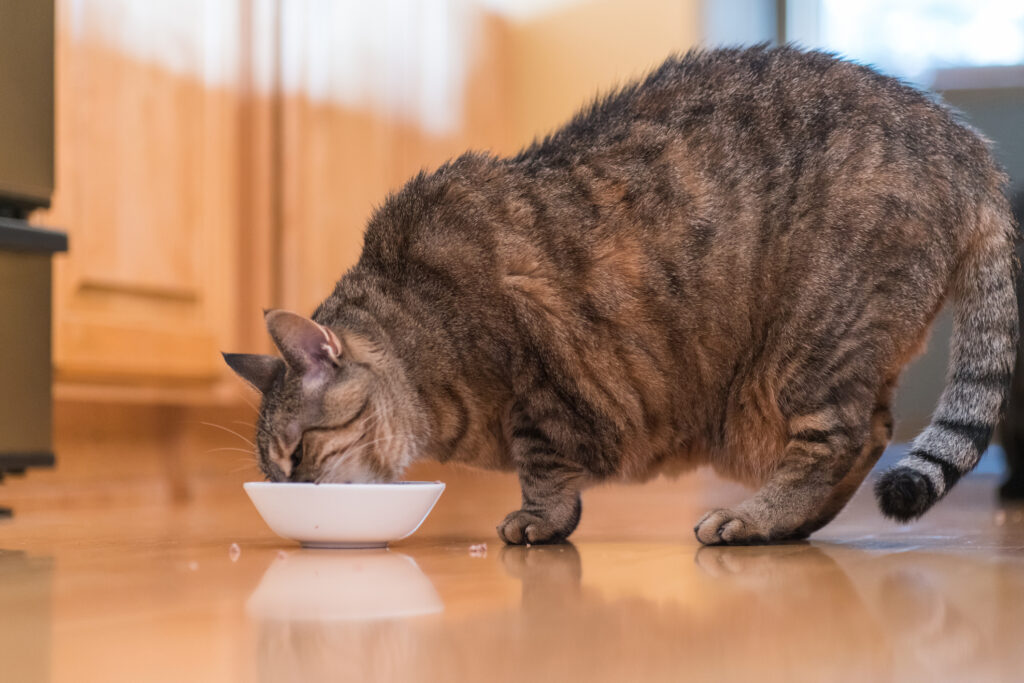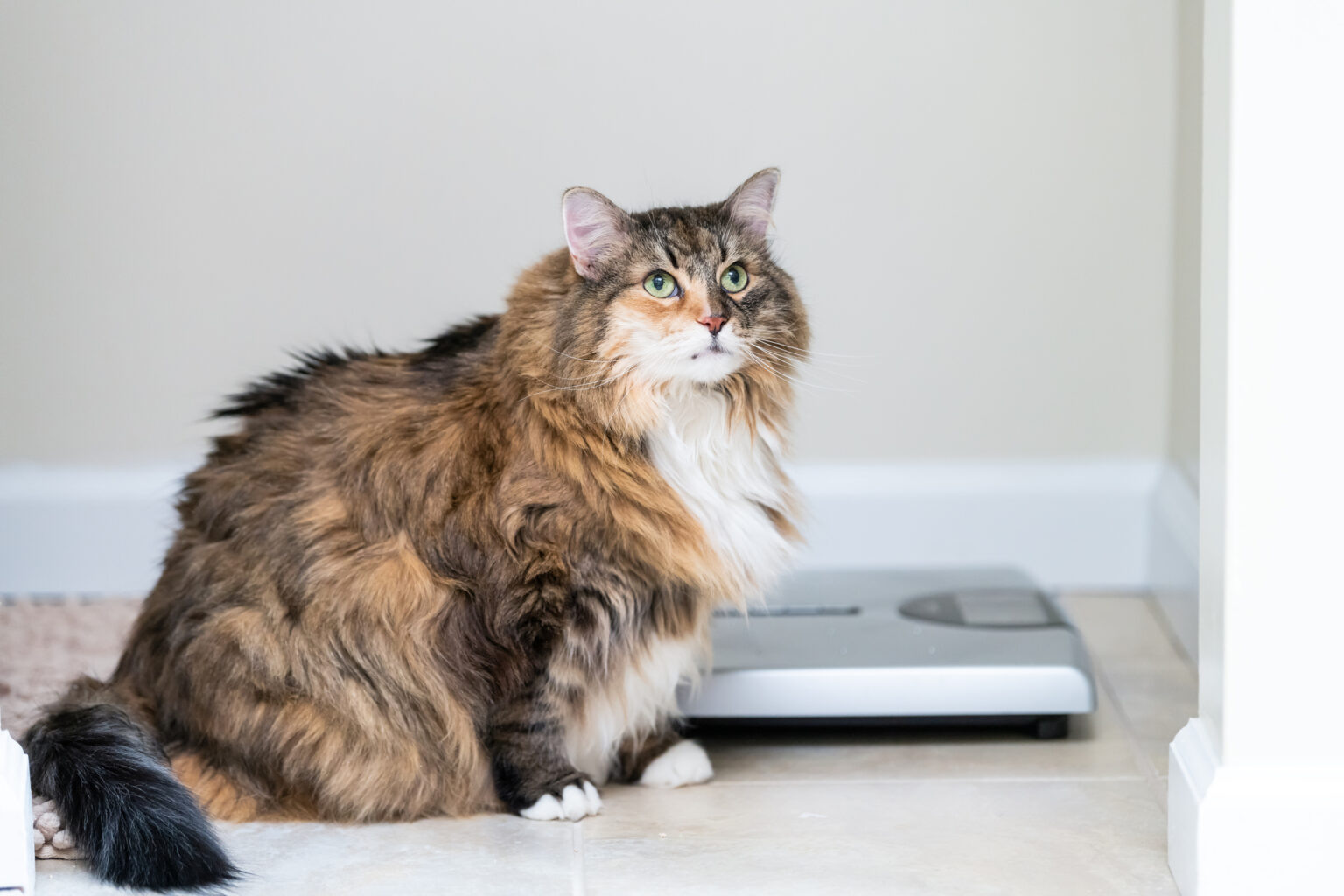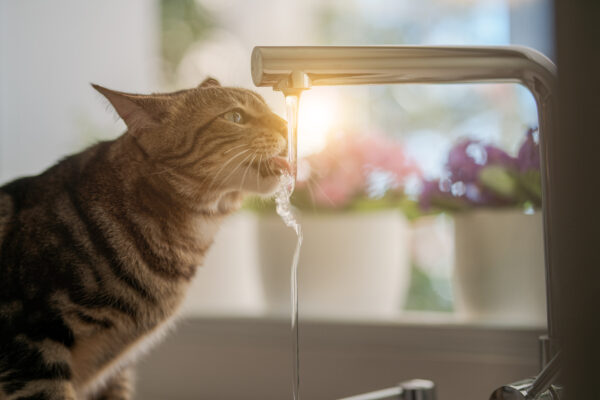Did you know that November is Pet Diabetes Awareness Month? To raise awareness of pet diabetes, we asked our resident vet to give you an overview of the condition, including symptoms of diabetes in cats and what to do if your cat has diabetes.
What is diabetes in cats?
Diabetes mellitus is a condition that affects the concentration of glucose, a type of sugar, in your cat’s blood. This can be due to your cat’s pancreas not producing enough insulin or their body not responding to insulin properly.
When your cat eats, carbohydrates are broken down into several sugars, including glucose. Glucose is absorbed into the bloodstream, where insulin is needed to move glucose into cells to use for energy. Without enough insulin, glucose builds up outside the cells instead. The body still needs energy, so it starts using fat and protein as alternative sources of energy. This can cause your cat to feel hungry all the time and eat constantly, yet still lose weight. One of the major complications of diabetes is ketoacidosis, where the build-up of ketones from fat breakdown can sometimes be fatal.
How common is diabetes in cats?
Anywhere between 1 in 100 to 1 in 500 cats develops diabetes1. While diabetes is most commonly diagnosed in older cats and neutered male cats, the disease can affect cats of all ages, sexes and breeds.
What are the possible causes of diabetes in cats?
Experts believe feline diabetes results from several different factors:
- Obesity, if you have an overweight cat.
- Pre-existing conditions, such as chronic pancreatitis, hyperthyroidism or acromegaly.
- Repeated use of steroids.
What are the signs of diabetes in cats?
Diabetes in cats can look similar to other conditions, such as kidney disease and hyperthyroidism. If you notice any of these signs in your cat, speak with your vet about the possibility of diabetes.
- Drinking excessive amounts of water (‘polydipsia’).
- Excessive urination: needing to clean their tray more frequently or finding urine accidents outside the tray (‘polyuria’).
- Noticeable weight loss, but eating more than usual (‘polyphagia’).
How is diabetes in cats diagnosed?
- Clinical signs such as recent weight loss, polydipsia and polyphagia.
- Urine sample tests to check for glucose, ketones and infection.
- Blood tests to check blood glucose, fructosamine and the liver and kidneys.
How is diabetes in cats managed?
If your cat has been diagnosed with diabetes, it can come as a shock. However, there’s good news: your cat can lead a happy, healthy and active life, as long as you manage your cat’s diabetes successfully.
All diabetic cats need insulin, so you’ll need to learn how to administer it to them. At first you may be nervous or afraid of giving your cat an injection, and you won’t be alone in this. Many pet owners are nervous about giving injections, but your vet will teach you how to handle the insulin, as well as how to inject it safely. Most cat’s don’t even feel the tiny needle prick.
Part of managing diabetes in cats is monitoring the blood glucose and how it is affected by the insulin dose. Too much insulin can cause low blood sugar (‘hypoglycaemia’) and won’t help your cat. It’s important to discuss this process with your vet and how you will work together to find the right dose for your cat.
The next important factor to consider is diet, especially as diabetes is a condition related to excessive sugar in the blood. Your vet can help you find a food that suits your cat’s specific dietary requirements.

Some diabetic cats no longer need insulin after a few weeks or months of treatment, this is known as clinical remission. However, clinical remission does not mean your cat’s diabetes has been cured. You must continue to take care with your cat’s diet and lifestyle. Cats that have gone into clinical remission may require insulin treatment again at a later date.
With a chronic condition like diabetes, it is important to stay in close touch with your vet. You can rely on them to answer all of your questions and help you as you learn to manage your cat’s diabetes successfully.
With a chronic condition like diabetes, it is important to stay in close touch with your vet. You can rely on them to answer all of your questions and help you as you learn to manage your cat’s diabetes successfully.
Dog owner too? Check out our discussion about diabetes in dogs.
Our articles are not a replacement for face-to-face vet advice. It’s important to consult with your vet on a regular basis to raise any pet concerns that you may have.
1 Panciera DL, Thomas CB, Eicker SW, Atkins CE. Epizootiologic patterns of diabetes mellitus in cats: 333 cases (1980–1986). J Am Vet Med Assoc. 1990;197(11):1504–1508.



